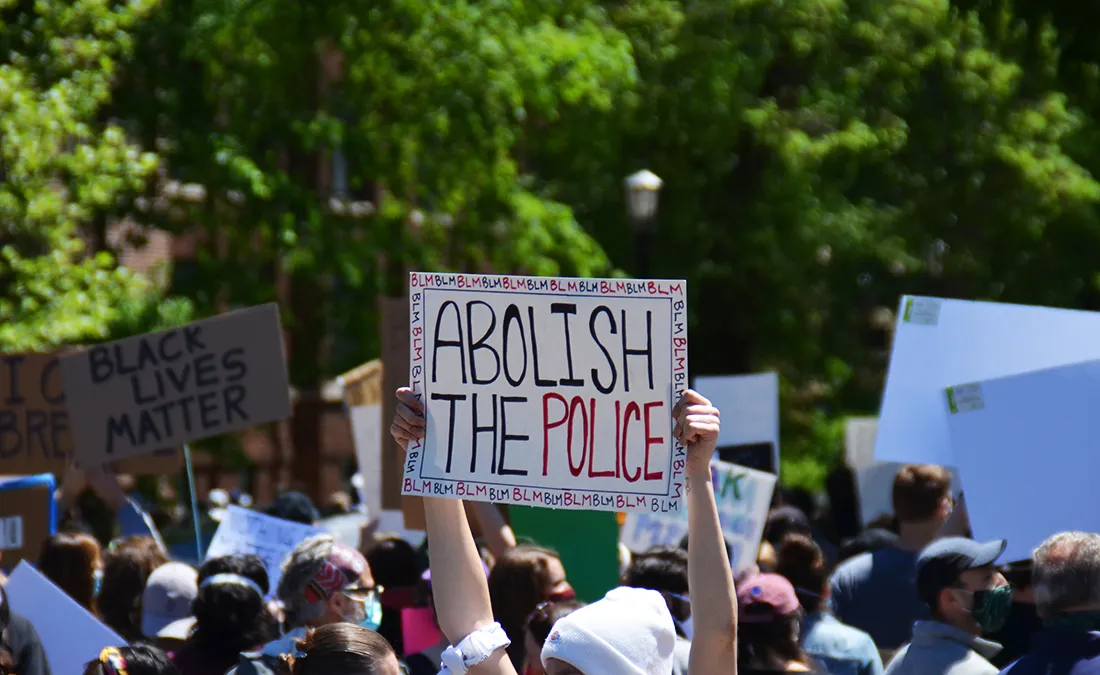When Joan Baez sang “We Shall Overcome” at the 1963 March on Washington alongside a quarter of a million peaceful protestors, the world stood still for a moment in the face of America’s racial reckoning for civil rights. When Chinua Achebe co-opted the language of English oppressors in Nigeria to write “Things Fall Apart” with both English and Igbo words, he turned Eurocentric misconceptions about African culture and narratives on their head and sparked thousands of African and Black American authors to take ownership of their stories by writing about their own experiences. When Banksy created “Bomb Love,” a criticism of military armament and the cultural normalization of war, his anonymous street art style allowed for his work to be seen by anyone, rather than it being an exclusive work available only to the privileged.
Art holds a storied place in the long history of political and social resistance. Enslaved and formerly enslaved Africans were denied education in America and thus unable to communicate through writing, but they did sing and dance. Encoded songs like “Sweet Chariot” and “Wade in the Water” literally helped people escape slavery.
In retaliation to the medieval writing that either grossly misrepresented or erased women altogether, Christine de Pizan wrote arguably some of the first feminist literature in response to the characterization of women as immoral whores, putting forth an alternate framing of women as more complex beings worthy of careful analysis rather than immediate condemnation.
Advocating for change is scary. However, utilizing the power of art and music creates a viable point of entry for all people to engage by aiming their passions intentionally. Such accessibility in a movement is rare, but it unites people and serves as a morale booster — if activism starts with memorizing the phrase “we shall overcome,” anyone can do it.
Art has the unique ability to help us to both capture and distill deeply held feelings and couple it with hope and, in the case especially of many novels and movies, to make us understand complex situations, relationships, feelings and people in a way that we cannot when it is in our own lives or when someone tries to explain it to us. Art can communicate ideas that, for a variety of reasons, we cannot convey directly and easily. When done successfully, it invites us to engage with the work and to step into the position of its co-creator. The best art moves us to be curious rather than judgmental, inspiring us to ask questions: Why did the artist make this? What is the artist saying? What does this lyric or image or recurring dance movement mean and why does it upset me? What moved the artist to create this? How does this relate to me?
The power of art is in its ability to tell a fuller story rather than enumerate a select set of facts (or even lies claiming to be facts). In the age of aggressive, overstimulating media hurling headlines and rage bait at us like spaghetti on a wall hoping it sticks, we’re constantly told what to do, what to think and what to feel. Marketers will tell you that if you hit on the right message at the right moment and say it often enough, you can get people to buy anything.
By contrast, literature, music, art and dance move us to search for answers rather than repeat them back mindlessly. When we consume art, figureheads and statistics on the news morph into characters we see in our mind’s eye and people we pass on the street. They aren’t a martyred hero or a heartless villain, they are just a person who could’ve been ahead of us at the Tresidder Package Center line or who set the curve in Math 51.
Art combines multiple forms of expression — not just facts, not just logic, not just fear, not just anger, not just faith. We are fallible to all of the above; we all have the power to choose how we think and act accordingly. Seeing ourselves in others’ creations, we are warned implicitly of the easy and tempting inclination to judge and hold oneself above others. The “us vs. them” narrative is satisfying in the short term, but in a world where we have to coexist, we can’t just go our separate ways and hope for the best. Functioning as a community who may not understand but can empathize with others is made easier in art.
I know that art alone cannot solve our political troubles. There are many battles ahead. I wish the solutions were easy, but since people have never been simple, our problems are equally complex. When confronted with noise that blocks out nuance, turn to art: both to boost morale and to turn the manipulative and harmful stories upside down and against the authors of those lies. Or, better yet, create your own. Audre Lorde warns us, “Your silence will not protect you.”
Speak up, write out your emotions, share your world with others and embrace theirs in turn. We can unify our community the same way art has unified us for years — by centering each others’ humanity.
